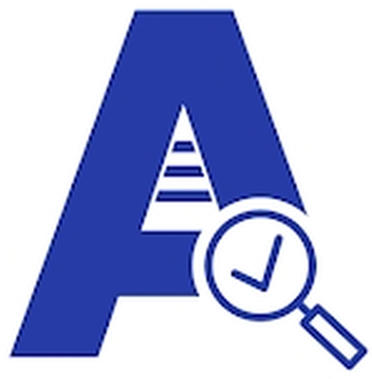Process Audit Template
Creating a Process Audit Template using eAuditor Audits & Inspections requires careful planning to ensure that all important steps of the process are covered. Here’s a general structure for a Process Audit Template that you can set up in eAuditor Audits & Inspections. This structure is flexible, allowing you to adapt it to your specific needs.

Process Audit Template Structure:
1. Audit Information
- Audit Title: Name of the audit process.
- Date: Date of the audit.
- Location: Location of the audit.
- Auditor’s Name: Name of the person conducting the audit.
- Department: Department involved in the process.
- Reference Number: A unique identifier for the audit.
2. Checklist Items
Section 1: Process Overview
- Process Name: What is the process that requires audit?
- Process Owner: Who is responsible for this process?
- Documented Procedure Available: Is there a documented procedure available for this process? (Yes/No)
- Compliance with Procedure: Is the process in compliance with documented procedures? (Yes/No/Comments)
- Key Objectives Met: Are the key objectives of the process being met? (Yes/No/Partial/Comments)
Section 2: Process Inputs
- Are inputs clearly defined?: Are the inputs required for the process clearly identified? (Yes/No/Comments)
- Input Quality: Is the quality of inputs acceptable? (Yes/No/Needs Improvement)
- Timeliness of Inputs: Are inputs received on time for the process to function efficiently? (Yes/No/Comments)
Section 3: Process Outputs
- Outputs Defined: Are the process outputs clearly defined? (Yes/No/Comments)
- Output Quality: Does the output meet quality standards? (Yes/No/Comments)
- Output Timeliness: Is delivery of output on time? (Yes/No/Needs Improvement)
Section 4: Resources and Equipment
- Resources Adequate: Are adequate resources (materials, tools, equipment) available for the process? (Yes/No)
- Equipment Maintenance: Is the equipment regularly maintained and operational? (Yes/No)
- Staff Training: Is staff properly trained to use the equipment? (Yes/No/Training Needed)
Section 5: Process Efficiency
- Process Flow Efficiency: Is the process flow smooth and efficient? (Yes/No/Comments)
- Bottlenecks Identified: Are there any bottlenecks or delays in the process? (Yes/No/Location/Comments)
- Process Improvements: Are there areas for improvement in the process? (Yes/No/Comments)
Section 6: Compliance and Regulations
- Compliance with Regulations: Does the process comply with legal and regulatory requirements? (Yes/No/Details)
- Compliance with Company Policies: Is the process aligned with internal company policies? (Yes/No/Comments)
- Safety Standards Adhered To: Does process follow safety standards throughout the process? (Yes/No/Safety Violations)
Section 7: Documentation and Records
- Records Up to Date: Are process records and logs updated in real time? (Yes/No/Comments)
- Access to Records: Are records easily accessible to authorized personnel? (Yes/No/Location of Records)
- Document Control: Is version-control in place for documents in use? (Yes/No/Improvement Needed)
Section 8: Communication and Feedback
- Clear Communication: Is there clear communication between different teams in the process? (Yes/No/Examples)
- Feedback Mechanisms: Are there mechanisms to gather feedback from employees about the process? (Yes/No/Feedback Received)
- Actionable Feedback: Has actionable feedback been implemented? (Yes/No/Implementation Status)


3. Risk Assessment
- Risks Identified: Have any risks or potential hazards been identified in the process? (Yes/No/Details)
- Risk Severity: Rate the severity of the identified risks (Low/Medium/High)
- Mitigation Plans: Are there mitigation plans in place for identified risks? (Yes/No/Details)
- Contingency Plan: Is there a contingency plan if the process fails? (Yes/No/Comments)
4. Audit Findings and Recommendations
- Major Findings: List the key findings from the audit.
- Non-Conformities: Document any non-conformities identified during the audit.
- Recommendations for Improvement: Provide recommendations for improvement.
- Action Items: List any corrective actions that need to be taken.
- Action Owner: Person responsible for corrective action.
- Due Date: Target completion date for the corrective actions.
5. Audit Summary and Sign-Off
- Audit Summary: Provide an overall summary of the audit, key strengths, and areas for improvement.
- Auditor’s Signature: Digital or handwritten signature of the auditor.
- Process Owner’s Acknowledgment: Signature or acknowledgment from the process owner.
Customization Tips:


- Conditional logic: eAuditor Audits & Inspections allows the use of conditional logic, so certain questions can appear based on previous answers. For example, if a non-conformity is found, a new section for corrective actions can appear.
- Scoring: You can add a scoring system to rate the performance of different sections of the process.
- Images and Attachments: Use eAuditor Audits & Inspection’s ability to upload images or attach documents to provide visual evidence of non-conformities or issues.
- Action Tracking: Assign actions with due dates and track them within eAuditor Audits & Inspections for follow-up.
